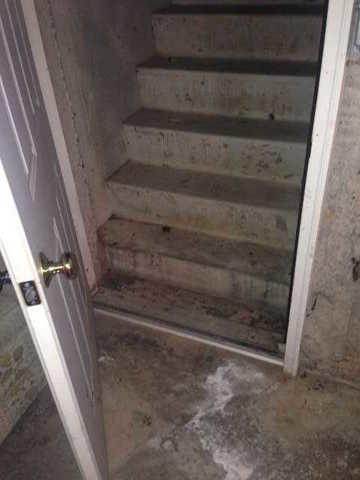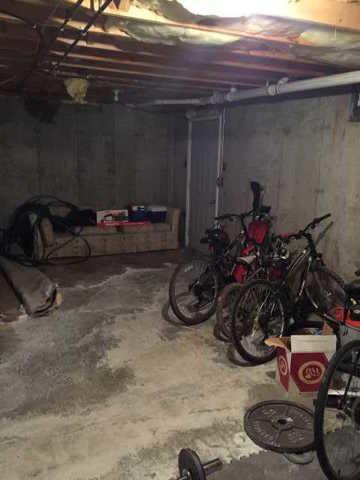
TrenchDrain
When it rained, water would flow into the basement through this hatch. To prevent the moisture from entering the basement, we installed a TrenchDrain at the base of the door. TrenchDrain is a grated drain that's installed flush with the floor. It traps water and redirects it to the sump pump system, where it is pumped out of the home.

WaterGuard
To stop water from breaching the perimeter of the basement, we installed WaterGuard along the edge of the walls. WaterGuard drainage channel has a patented profile that includes a wall flange with spacers for collecting wall seepage, channel holes that allow ground water to enter the drain line, and a large-diameter channel that can't crush or kink like standard plastic drain tile can. This innovative interior French drain system, and all of our patented basement drainage systems, are designed to work with the powerful, reliable sump pump systems from Basement Systems.

Mold Prevention in Wet Spaces
To prevent mold from forming in this damp, humid basement, our team installed a SaniDry dehumidifier to take the moisture out of the air. Unlike standard, suitcase-size dehumidifiers designed to for room-sized dehumidification tasks, SaniDry models have the capacity to dehumidify a 2500 sq. ft. basement or crawl space. And thanks to a dual-stage air filtration system, SaniDry dehumidifiers can also clean the air by removing mold spores, dust mite debris and other particulate matter.

Removing Water
After water is collected from the basement with TrenchDrain or WaterGuard, it needs to be pumped out of the basement. One of the products that we recommend installing is the TripleSafe sump pump. TripleSafe's oversize plastic sump liner contains 3 sump pumps that can work together or separately depending on pumping demands. With the TripleSafe system, you don't have to worry about high pumping demands that can overwhelm or burn out single-pump systems. And if there's a power outage, your TripleSafe system will keep operating, thanks to a battery-powered backup pump.



